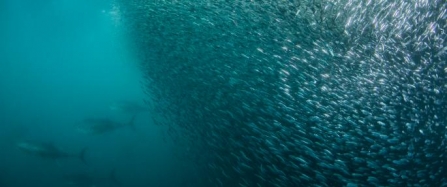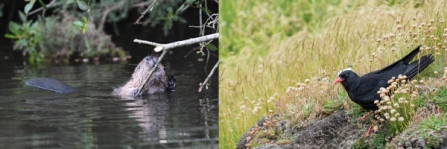Some species had a good year in here in Cornwall; here are the 2018 Top Ten Wildlife Highlights:
1. Cornwall’s Beavers have Babies: photo David Parkin
Following the trial release of beavers on a farm near Truro, the Trust announced the birth of two kits – baby beavers. These were the first beavers to be born in Cornwall for over 400 years. Their antics were enjoyed by thousands of television viewers nationwide on the last episode of BBC’s Springwatch 2018.
2. Bottlenose Dolphins call our Waters their Home
After years of painstaking collaborative research it has finally been proven th at the small pod of bottlenose dolphins regularly spotted in Cornwall is a resident pod, the only group of their kind in England. We now know that the group is made up of 28 dolphins, which can be identified by markings on their dorsal fins. Every year we get numerous sightings of the group who can be seen leaping out of the water, surfing, playing and feeding close to the shore all around Cornwall’s coast
3. Blue-Fin Tuna Feeding Frenzies:
It’s been another great year for blue fin tuna sightings in Cornwall with the UK’s first successful blue fin tuna tagging programme being run this summer and autumn. The project ‘Thunnus UK’ has tagged a record number of these amazing giant tuna. Hundreds of sightings have been reported, with feeding frenzies seen all around the county as tuna feed on sardines and other small fish.


